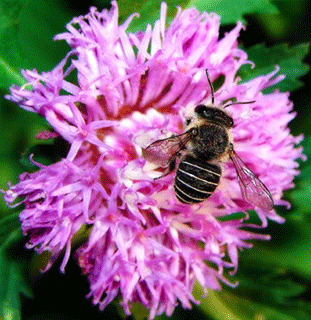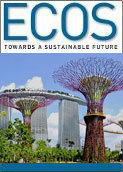
|
Published: 18 March 2013
Locals can do it better
It is thought the loss of crop pollination by wild insects can be replaced by managed honey bees without reduced crop production. However, new research recently published in Science challenges this idea.

|
|
One of Australia’s 1500-plus species of native bee. Credit: Louise Docker/Wikipedia (CC BY 2.0)
|
The paper, based on field data collected from 20 countries and 41 crop systems, revealed the vital role wild pollinators – such as native bees, flies, beetles, birds and bats – play in maximising crop fruit set (the proportion of flowers setting seeds or fruits).
The data also showed that wild insects consistently pollinated crops more effectively than honey bees across the crop systems. Fruit set was higher in sites with more visits to crop flowers by wild insects.
Pollination is an important step in making seeds and fruits which can significantly influence crop harvest. Some crops are managed for improved pollination by adding honey bee hives during flowering season.
‘Last year, around nine billion honey bees were moved into Australian almond orchards for flowering season – that’s more bees than people on Earth!’ said CSIRO researcher and co-author, Saul Cunningham.
‘Around the world people are looking for ways to make agricultural production more efficient. At the same time there is global concern that biodiversity loss is continuing at a dangerous rate. This research shows that maintaining biodiversity in agricultural landscapes can support agricultural production.’
The findings suggest that crop production is in many cases limited by lack of pollination. Fruit set was highest when both wild bees and honey bees were abundant, showing that rather than substituting for one another, the different pollinators are complementary.
Source: CSIRO



